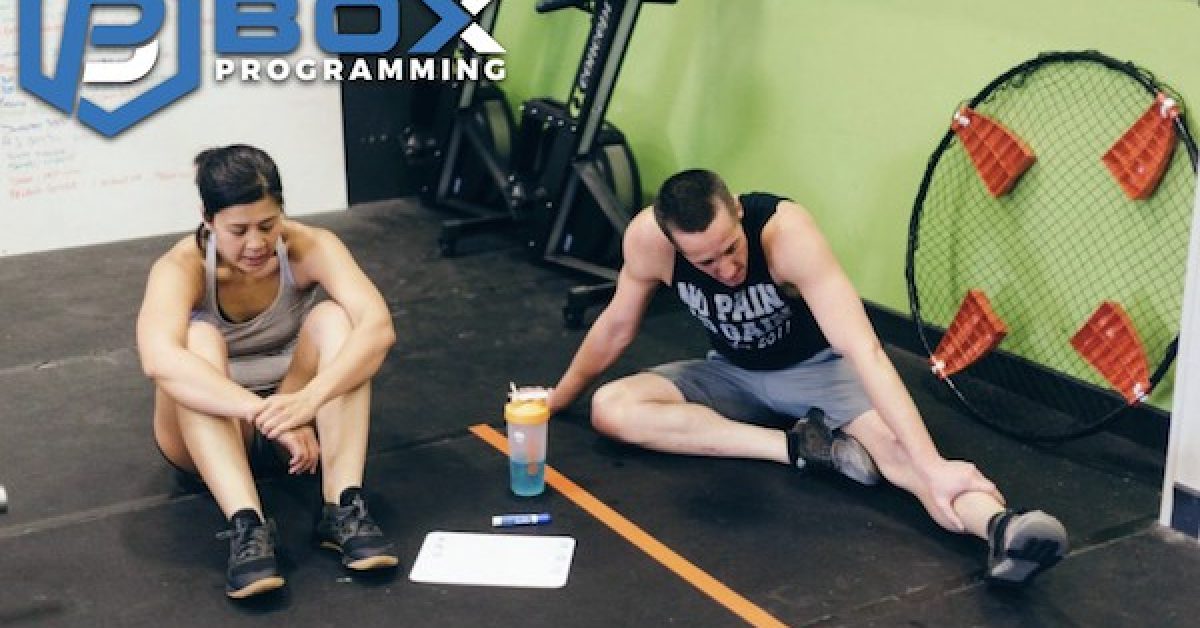The job of coaching CrossFit classes has many challenges. Of course the obvious being time management, proper delivery of programming, providing guidance and scaling options, as well as spotting faults.
Providing guidance and proper scaling options may be the most challenging aspect of coaching group classes. Not because thinking of options for giving the correct guidance can be difficult, but because sometimes we must convince our athletes, in a tactful way, that a particular workout may not line up with their ability or goals.
Indeed, convincing our athletes that we are trying to ensure their safety, and not trying to knock them down a peg, is tough, but it can be done if we are concise with our guidance as well as emphatic with our delivery. At the end of the day, our athlete’s safety lies in our hands. This goes for athletes of all levels, not just our beginners.
It may be our advanced athletes that have a higher risk of injury, being able to go deeper into their maximum threshold. The blessing and curse of CrossFit is that it’s competitive.
A lot of former athletes gravitate to CrossFit as a method of staying competitive after their athletic careers are over. There are so many ways to measure our fitness, and it’s always clear where you need the most work.
On the other hand, the competitive nature often makes people forget about form or doing what is right for their bodies. I’d venture to say that most injuries occur not from bad programming or coaching, but from letting your ego get the best of you.
As coaches, understanding the psychology of these situations and putting your athletes in the best possible position with movements/scaling that match up with their abilities/goals is paramount.
Historically, during the CrossFit Open, athletes all over the world take a second (and maybe even a third) attempt at these workouts, in an effort to better their score. Athletes are trying movements they’ve never tried, as well loadings they’ve never tried.
It’s always awesome to see how many barriers are broken during the CrossFit Open. Conversely, it’s painful to watch so many people get wrapped around their scores, and taking multiple attempts at these workouts. I know because I was one of them for the last five years.
This past year, I had plans of not competing in the Open to really give my mind a break. The last few years we’ve been close to making Regionals as a team, and the pressure of repeating workouts made the Open feel like more of a job than a hobby.
The Open became something I dreaded for myself, but loved for my athletes. Fast forward to this past year, and it’s a totally different beast. With considerably less training in preparation for the Open, I told myself I would participate on my own terms.
I would perform the workout on Mondays only, so I wouldn’t spend the weekend obsessing over how I could improve my score. I also wanted zero chance of being able to do the workout more than once. The end result was, I actually enjoyed the Open this past year!
With that said, letting yourself perform these workouts more than once is simply not necessary. It’s one thing if it’s going to determine your trip to regionals, but if it’s just for your own competitive drive, then it just doesn’t make sense from a training perspective.
Your athletes would never expect you to program the same workout within a day’s or week’s time, and this situation is no different.
Substitutions
Making substitutions will more than likely happen in just about every class, whether it be an old injury or simply a movement pattern that does not line up with an athlete’s ability. Often times, we see athletes getting their head wrapped around that need to perform a specific movement because a workout calls for it.
This a major challenge when writing efficient programming for a group, but it’s very easy to make appropriate substitutions on the fly. Just because a workout calls for an overhead squat does not mean you need to perform that movement, especially if it does not line up with your goals or ability.
It’s important to remind your athletes that no one is going to look at you differently if they substitute a safer variation like a front squat, if that means removing the risk of injury.
They may also need to be reminded that we are not all built the same, so being mindful of long-term goals and knowing if a particular movement is going to help us get closer or further away from those goals is important.
I’ve had this talk numerous times with my athletes and at times, it may take a lot of convincing to get your athlete to be amenable to your recommendations. In these situations, it’s important to not give in to what they want to do, and stick to what you know is best for that athlete.
Your athletes aren’t paying you to be their buddy, they’re paying you to be their coach!
Scaling
Athletes often look down on scaling. This is especially true for the athlete that Rxs most workouts, and then has to scale a workout because of one movement that is outside their wheelhouse.
Much like providing proper substitutions, scaling a workout correctly ensures that we are getting the proper dose of training, and the correct stimulus of the workout. A way I’ve found that ensures this will happen is utilizing time caps.
We all should know how long a particular workout should take, and how said workout is going to lend itself to the overall goal of the training session. Providing a time cap for a task domain workout gives your athletes more guidance, without them having to feel as bad about scaling.
A good example of this is a workout like “Fran”, where the time-cap should be no more than 7 minutes. With that said, we know that athletes should be able to move quickly, and should not be spending an inordinate amount of time staring at the barbell or pull-up bar, so their scaling needs to ensure this does not happen.
There are times when time caps will be on the quicker end of the spectrum, and some higher level athletes won’t finish. These time caps ensure that they are not getting complacent and pushing their boundaries.
A good example of this is a workout like “GI Jane”. My time cap is 12 minutes. For a lot of people, this will be a 12 minute AMRAP of burpee pull-ups. I can promise you, your athletes will push their pace a lot harder than normal had the time cap been 15 minutes.
And really, do you want your athletes doing burpee pull-ups for more than 12 minutes? Not likely. Overall, scaling is vital to your athletes success and longevity.
Without a doubt, it’s the coaches job to portray scaling and time caps in the most positive light and build value in proper programming that keeps your athletes safe and ensures the intended stimulus.
In short, the coach needs to be mindful that many of their athletes will not be receptive to proper scaling, but it is our job to build value in, and explain the intent of, their training, while advising the proper scaling options.
Proper scaling and substitutions should lend to the athlete’s abilities and overall goals. If there is any question about a particular movement or loading, then chances are it does not line up with this.
This is 100% the coach’s job to ensure proper scaling and substitutions are happening more times than not. Of course, there are going to be times that it does not happen, especially with larger groups, but accurately conveying “the why” of the training and alternate scaling options of ahead of time will keep your athletes healthier and in a better position to reach their goals!


